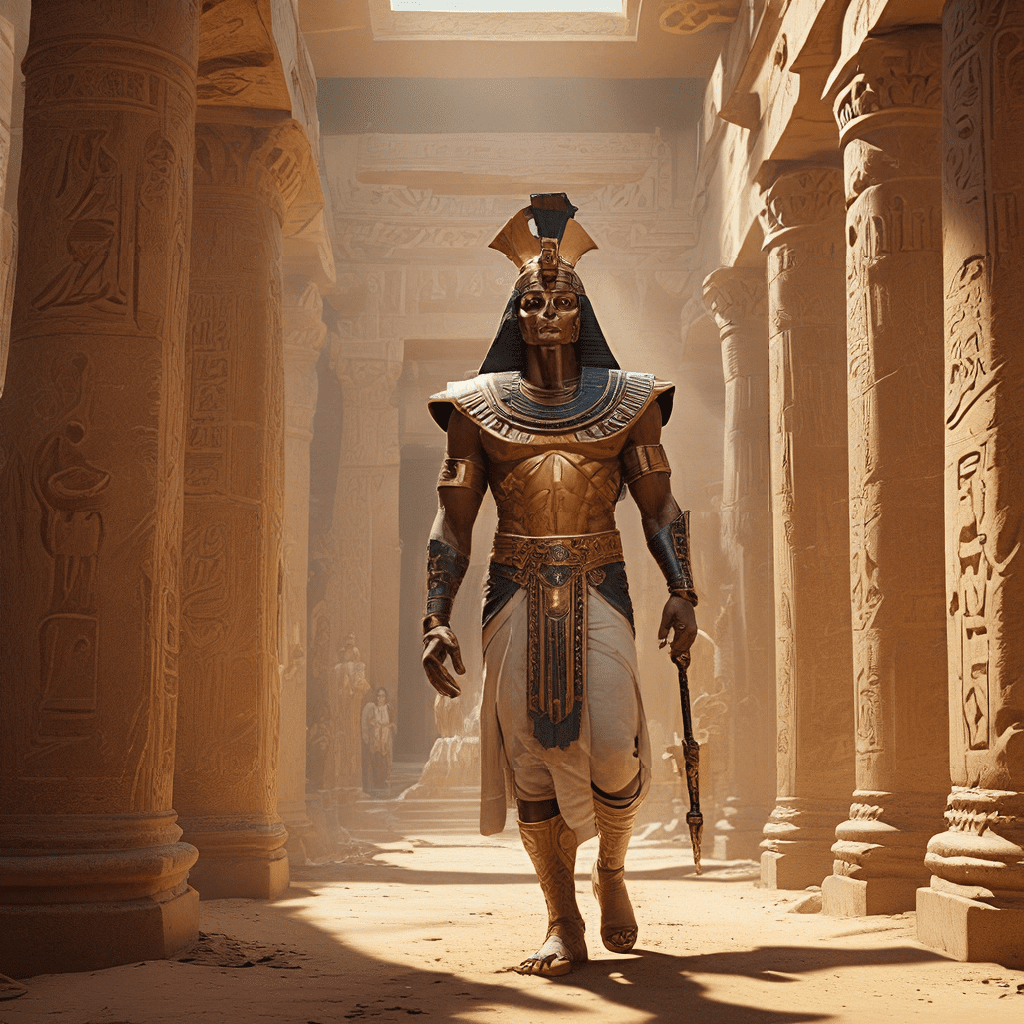1. Introduction: The Importance of Osiris
In ancient Egypt, the god Osiris held a profound position in their belief system. He was revered as the god of the underworld, fertility, and the afterlife. Egyptians believed that Osiris’s death and resurrection were crucial events that paved the way for their own eternal life. The Abydos Passion Play emerged as a sacred ritual that vividly reenacted this pivotal myth, offering a tangible connection to the divine and the promise of a favorable afterlife.
The Abydos Passion Play, held annually at the temple of Abydos, was a theatrical performance that mirrored Osiris’s journey from death to rebirth. This elaborate ritual served as a profound religious experience for the Egyptians, allowing them to actively participate in and witness the divine story of their beloved god.
2. The Story of Osiris: A Divine Tragedy
The myth of Osiris tells a tale of betrayal, murder, and ultimately, a triumphant resurrection. Osiris, known for his gentle nature and wisdom, ruled as the benevolent king of Egypt. However, his own brother, Set, the god of chaos and storms, harbored envy and a thirst for power. This envy culminated in a sinister plot to usurp Osiris’s throne.
Driven by his insatiable desire for power, Set lured Osiris into a beautifully crafted chest, promising it as a gift. Once Osiris stepped inside, Set slammed the lid shut, trapping him within. The chest was then tossed into the Nile River, where it was carried far away, symbolizing the loss of Osiris’s life and his rule.
3. Isis’s Search and the Resurrection of Osiris
The death of Osiris left a void in the hearts of the Egyptians, but it was his devoted wife, Isis, who took up the mantle of hope and resilience. She embarked on a tireless search to recover her beloved husband’s fragmented body. Despite the immense grief, Isis was determined to bring him back, driven by her unwavering love and the promise of a future together.
After an arduous journey, Isis successfully located the scattered body parts of Osiris, collecting them piece by piece. Recognizing the significance of her husband’s body, Isis became the first to perform the ritual of mummification. She lovingly reassembled his dismembered body, laying the foundation for the practice of embalming that would become central to ancient Egyptian death rituals.
4. The Abydos Passion Play: A Ritualistic Performance
The Abydos Passion Play, held annually at the temple dedicated to Osiris, was a highly anticipated event. It was a vibrant and solemn occasion that brought together priests, devotees, and communities to participate in the retelling of Osiris’s story. The play’s powerful performances served as an act of remembrance, offering a glimpse into the divine realm.
The ritual reenactment unfolded within the temple grounds, with the priests assuming the roles of the various deities involved in the myth. Utilizing masks, costumes, and meticulously choreographed rituals, the priests brought the story of Osiris to life. This theatrical performance not only served as entertainment but also as a profound religious experience, connecting the audience to the divine.
5. The Role of the Priests in the Play
The priests played a pivotal role in the Abydos Passion Play, utilizing their knowledge and skill to embody the divine characters. Their portrayal of Osiris, Isis, Set, and other deities allowed the audience to witness the myth unfold before their eyes. Their performance was not merely an act of storytelling; it served as a bridge between the human and divine realms.
The priests’ use of masks, costumes, and intricate rituals created a sense of awe and reverence among the audience. Through their performance, the priests became conduits for the divine, allowing the audience to experience a profound connection to the sacred.
6. The Significance of the Play’s Themes
The Abydos Passion Play explored profound themes that resonated deeply with the Egyptians. The play’s central focus on the struggle between order (represented by Osiris) and chaos (represented by Set) mirrored the ongoing battle between good and evil in the world. The play served as a reminder of the fragility of order and the persistent threat of chaos.
The play’s most poignant theme, however, was the importance of resurrection and eternal life. The resurrection of Osiris, despite his tragic demise, offered a ray of hope for the Egyptians. It provided them with a belief that even after death, there was a possibility of a new life in the afterlife. The play’s celebration of resurrection encouraged the Egyptians to live virtuous lives, hoping for a favorable judgment from Osiris in the underworld.
7. The Connection to the Afterlife
The Abydos Passion Play’s connection to the afterlife was deeply ingrained in Egyptian belief. The play served as a reminder of the soul’s journey after death and the importance of living a righteous life to ensure a successful passage into the afterlife. Osiris, resurrected as the ruler of the underworld, was also the judge of the dead.
The play served as a tangible representation of the Egyptians’ belief that even death was not the end. It offered them comfort and hope, assuring them that they could achieve eternal life by adhering to the principles of morality and righteousness. The powerful imagery of Osiris’s resurrection served as a constant reminder of the promise of a new life in the afterlife.




